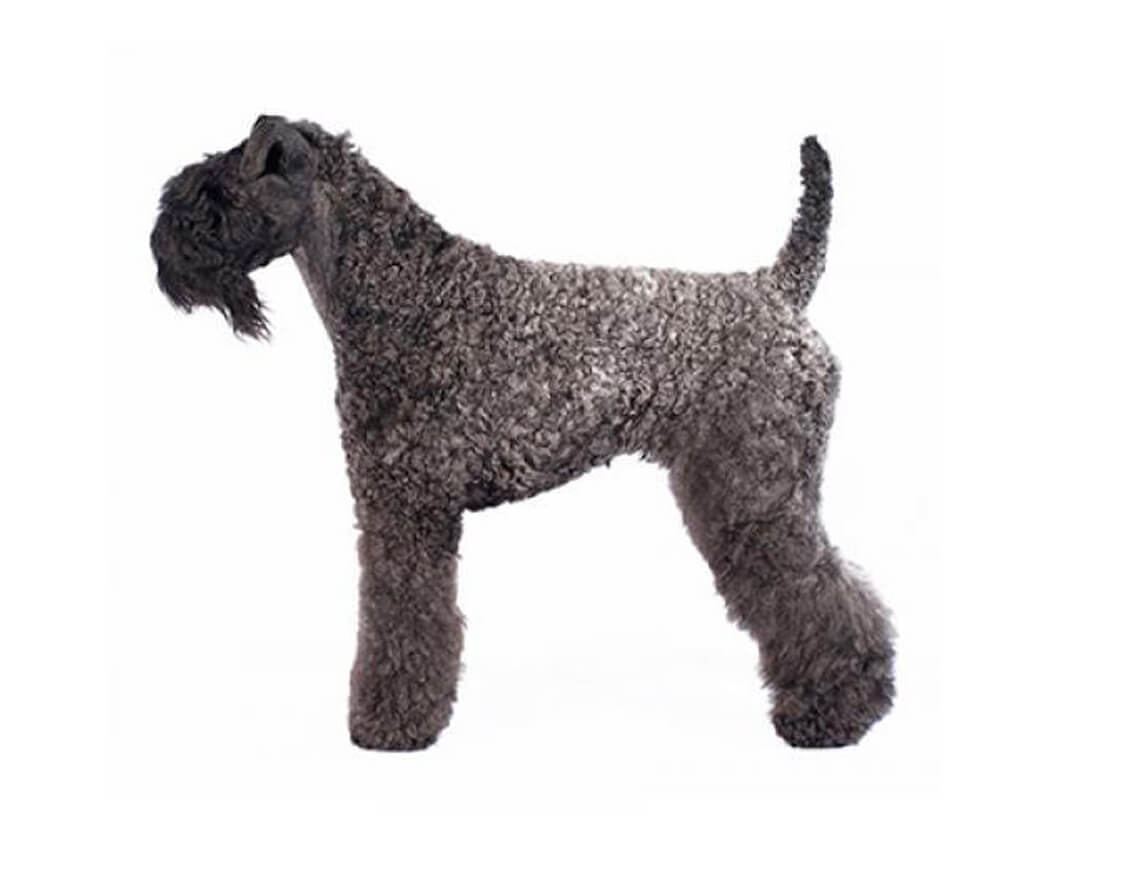
A native of County Kerry, Ireland, the Kerry Blue Terrier is an intelligent working and utility terrier bred for hunting, retrieving and herding. Playful, loving and energetic, the Kerry loves being part of the family. This breed requires daily exercise and firm, patient training. As hunters, Kerries may not accept cats or small pets. The breed’s coat is hypoallergenic but needs regular brushing and trimming.
DID YOU KNOW? It is thought that Irish peasants developed the Kerry as an answer to the nobility using Irish Wolfhounds to protect their hunting grounds from poachers. The Kerry was used to help peasants silently hunt the noble hunting grounds.
ALSO KNOWN AS: Irish Blue Terrier
The need-to-know
- Dog suitable for experienced owners
- Some training required
- Enjoys active walks
- Enjoys walking an hour a day
- Medium dog
- Minimum drool
- Requires grooming every other day
- Hypoallergenic breed
- Chatty and vocal dog
- Guard dog. Barks and alerts
- May require training to live with other pets
- May require training to live with kids
Personality

Described as fierce, intelligent, charming and trust-worthy, the Kerry Blue is still a formidable character even though they are more popular as a show dog than working dog today. Bred to deal with vermin and guard property, the Kerry Blue is an independent thinker, and if left untrained may make decisions by themselves that lead owners into trouble!
History and Origins

Country of Origin: Ireland
Originating from County Kerry in the south-west of Ireland, the Kerry Blue is the National Dog of Ireland. A versatile, hard-working farm dog, the Kerry Blue was and is, excellent as a guard/watch dog, and was originally bred to kill rats and even take to the water after otters.
Their origins are slightly hazy and may originally have been a cross between existing Irish Terriers and Bedlington Terriers but this is uncertain enough that romantic legends still talk of the Kerry Blue’s ancestor swimming ashore from a shipwreck.
Recognised by the Irish Kennel Club in 1922, a breed club was formed in the UK that same year and the breed standard formalised - although while they found a niche in the terrier world they have for some reason never been hugely popular.
Nutrition and Feeding

The Kerry Blue Terrier needs to have a balanced diet including all the main nutrient groups and a constant supply of fresh water. It's also important to conduct regular body condition scores to ensure you keep your dog in ideal shape and remember to feed your pet at least twice daily and in accordance with the feeding guidelines of their particular food.
Exercise

An hour a day of dog exercise, walking and free running is the bare minimum, ideally much more, particularly training that engages the Kerry Blue’s exceptional brain. Any activity that can recreate hunting and catching rats will be a hit, as will scent based work such as tracking, scent discrimination and man-trailing.
Other Information

Health and Common Issues
Generally, quite a healthy breed, the most common health problems for Kerry Blue dogs are some particular eye and skin problems. Check the Kennel Club website and the breed club for up-to-date health information.
Space Requirements
The Kerry Blue will fit into any sized home, but does need a garden with secure fencing, they are agile and determined in pursuit of quarry and will jump over, dig under or squeeze through inferior fencing! As a guarding and vocal terrier, the Kerry Blue is better suited to a quieter home or more rural environment, the constant stimulation in a busy, city or town household may well result in a very loud, stressed dog who cannot relax.
Training Kerry Blue Terrier
Early socialisation to other dogs, children and livestock is essential but even then, they are unlikely to mix well with cats - and may even consider resident cats as prey outside the comfort of the house or if their predatory instincts are aroused. A well socialised and habituated Kerry Blue is easily capable of many canine sports and activities, but they are not a dog to ignore a challenge or perceived threat and owners should always remain aware of their game, feisty nature. When it comes to dog training, they respond well to positive reinforcement and are quick learners once they believe that what you want from them was their idea in the first place!
Best Family Dog Breeds
Due to their independent nature and strong desire to hunt, the Kerry Blue is better suited to families without children or with older teenagers. The Kerry Blue Terrier is unlikely to tolerate the wobbliness of toddlers or the noise of babies well and this will result in a stressed dog who is unhappy and difficult to manage. Older teenagers who have an interest in dog training may enjoy the challenge of getting the Kerry Blue ‘on-side’. While many dogs are traditionally thought of as being good with children, all dogs and children need to be taught to get on with each other and be safe together. Even so, dogs and young children should never be left alone together and adults should supervise all interactions between them.
Did You Know?
- Although they are National Dog of Ireland, the Kerry Blue is on the UK’s Vulnerable breed list, with well under 200 puppies registered in any of the last five years. Despite this, a Kerry Blue, “Torums Scarf Michael” won Best in Show at Crufts in 2000.